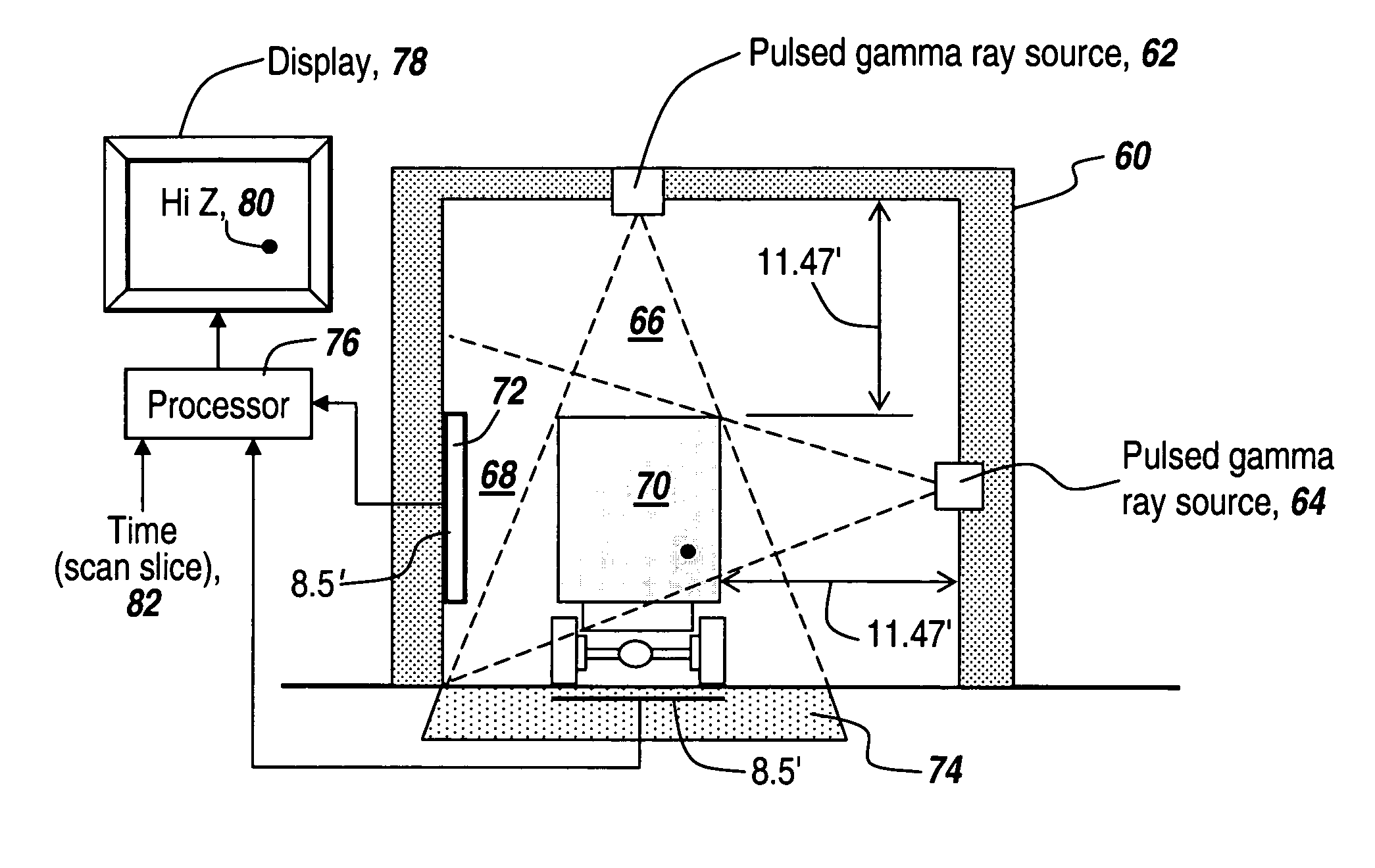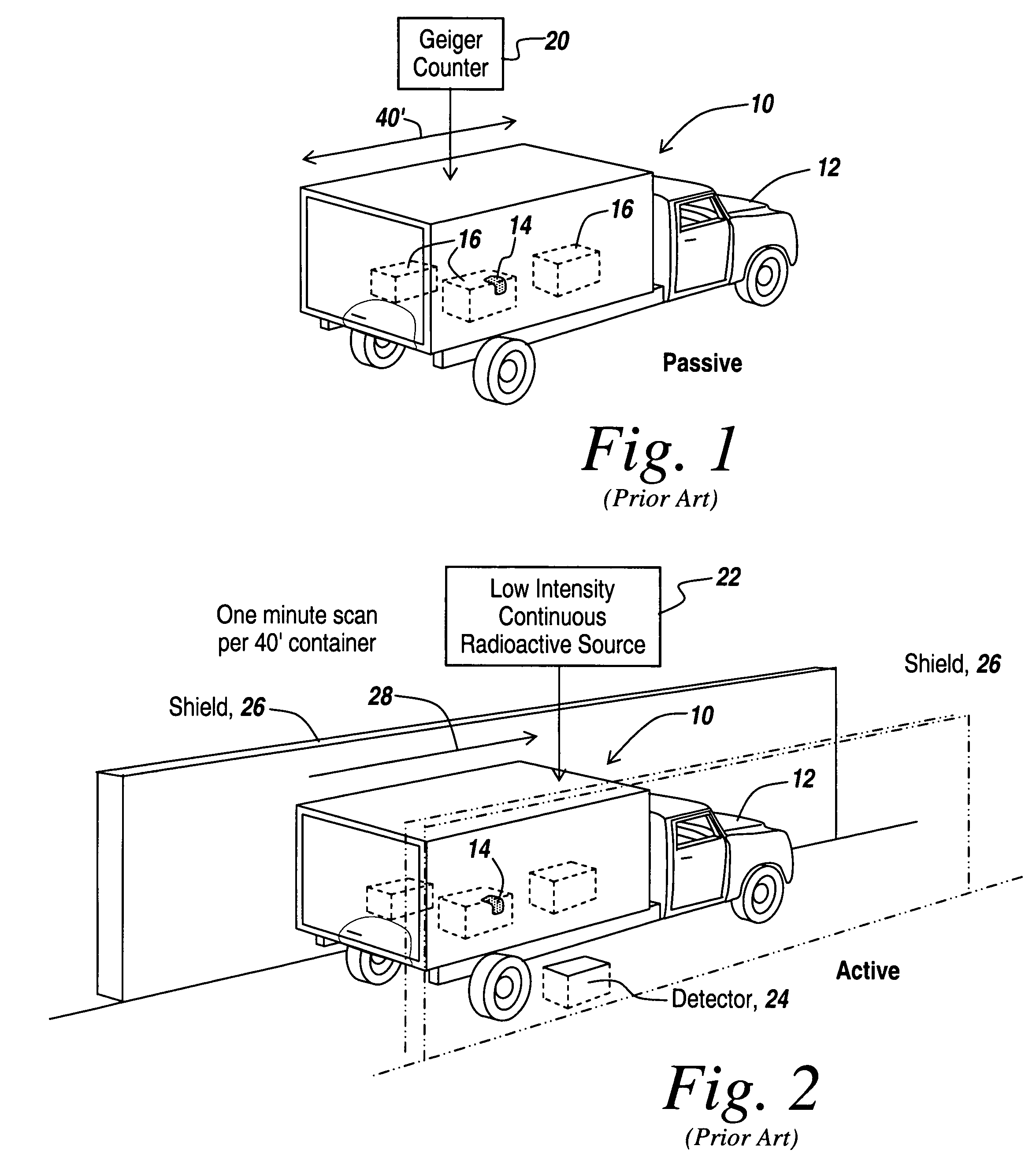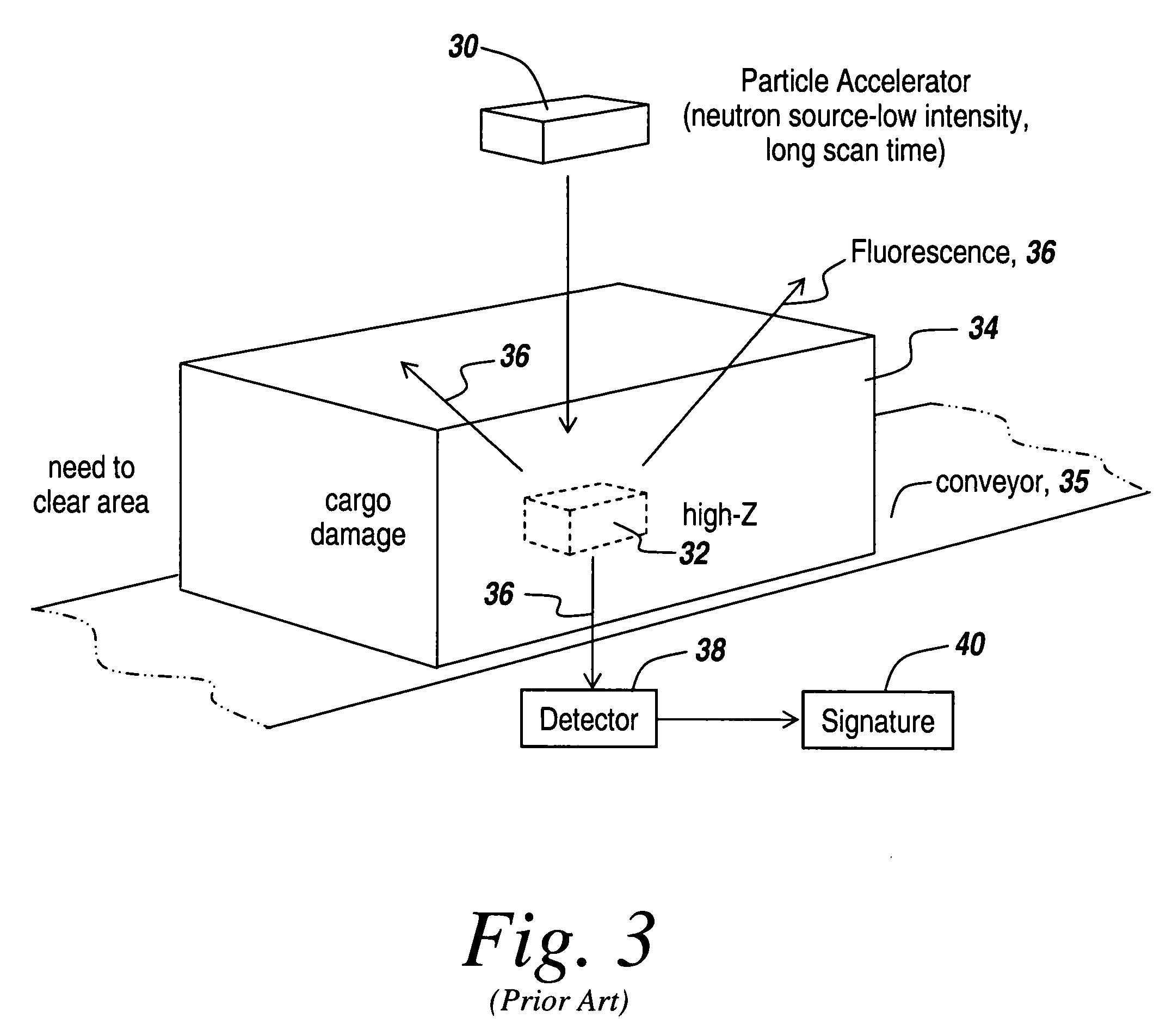Method and apparatus for the safe and rapid detection of nuclear devices within containers
a container and nuclear technology, applied in the direction of material analysis, material analysis using wave/particle radiation, instruments, etc., can solve the problems of insufficient power of low-intensity continuous gamma rays, system inability to see through large amounts of cargo, and passive techniques such as geiger counters cannot be utilized to detect the presence of nuclear materials. , to achieve the effect of fast scanning tim
- Summary
- Abstract
- Description
- Claims
- Application Information
AI Technical Summary
Benefits of technology
Problems solved by technology
Method used
Image
Examples
Embodiment Construction
[0078] Referring now to FIG. 1, a container 10, which may be 40 feet in length, is located on a truck 12 that transports the container through a port facility.
[0079] In order to find out whether or not there is a threat 14 within cargo 16 in container 10, a Geiger counter 20 is utilized to passively detect radiation from threat 14 as it exits the container.
[0080] As mentioned hereinbefore, the problem with passive systems is that either lead that packages a threat or water itself, for instance in frozen food, can completely mask the radiation from threat 14.
[0081] Referring to FIG. 2, in another prior art system, in an active system, threat 14 is detected through the use of a low-intensity continuous radioactive source 22 that detects the attenuation of radiation from the source through the container to a detector 24. It is noted that in the case of utilizing radioactive sources there is a significant health hazard in addition to the inability to detect the low-intensity continuo...
PUM
| Property | Measurement | Unit |
|---|---|---|
| speed | aaaaa | aaaaa |
| length | aaaaa | aaaaa |
| lengths | aaaaa | aaaaa |
Abstract
Description
Claims
Application Information
 Login to View More
Login to View More - R&D
- Intellectual Property
- Life Sciences
- Materials
- Tech Scout
- Unparalleled Data Quality
- Higher Quality Content
- 60% Fewer Hallucinations
Browse by: Latest US Patents, China's latest patents, Technical Efficacy Thesaurus, Application Domain, Technology Topic, Popular Technical Reports.
© 2025 PatSnap. All rights reserved.Legal|Privacy policy|Modern Slavery Act Transparency Statement|Sitemap|About US| Contact US: help@patsnap.com



